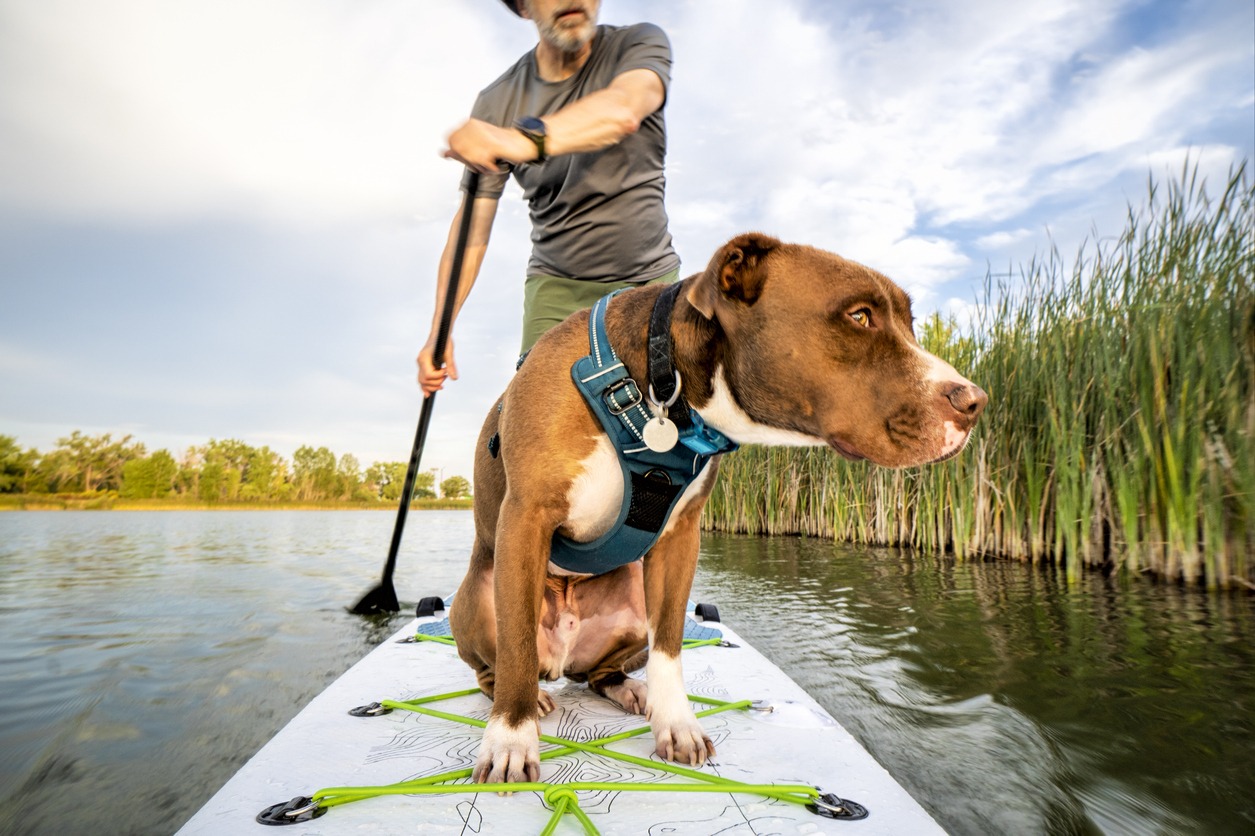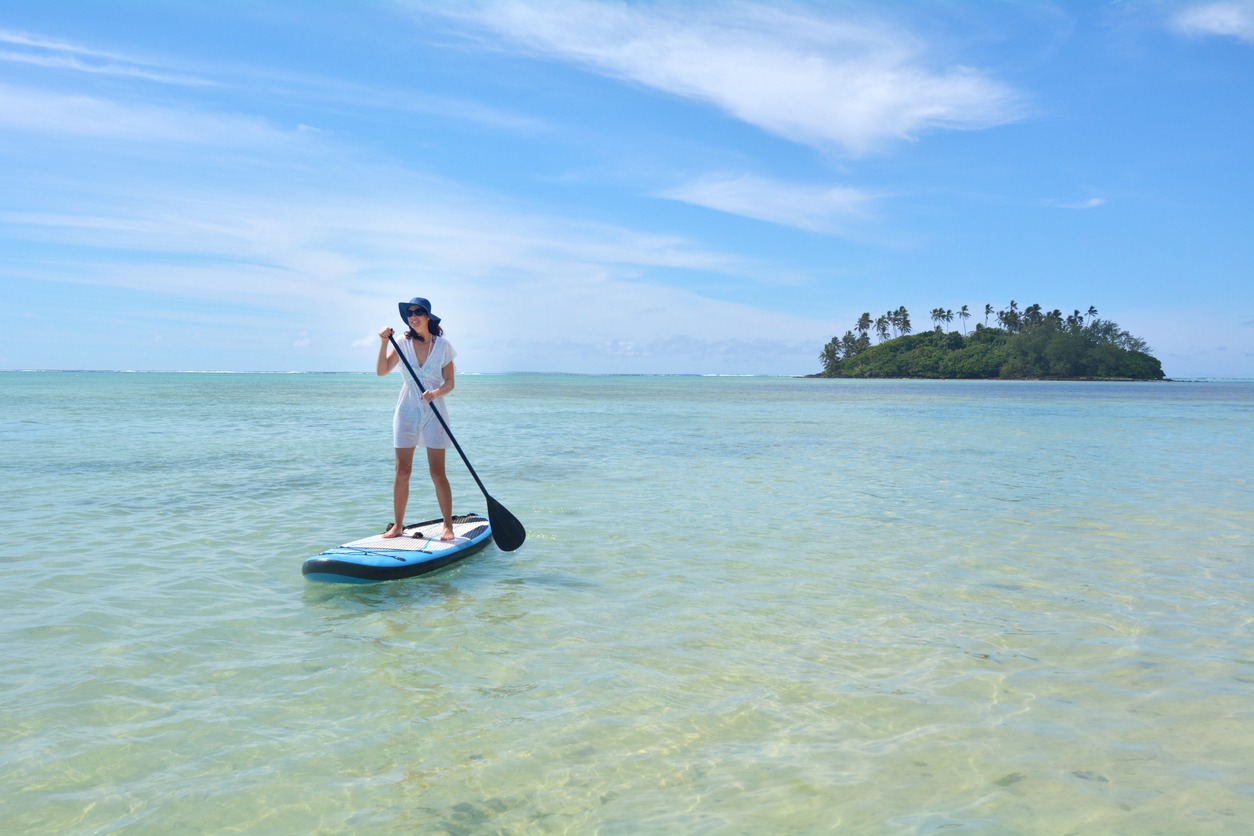The Importance of Staying Hydrated While Bodyboarding and Stand Up Paddleboarding
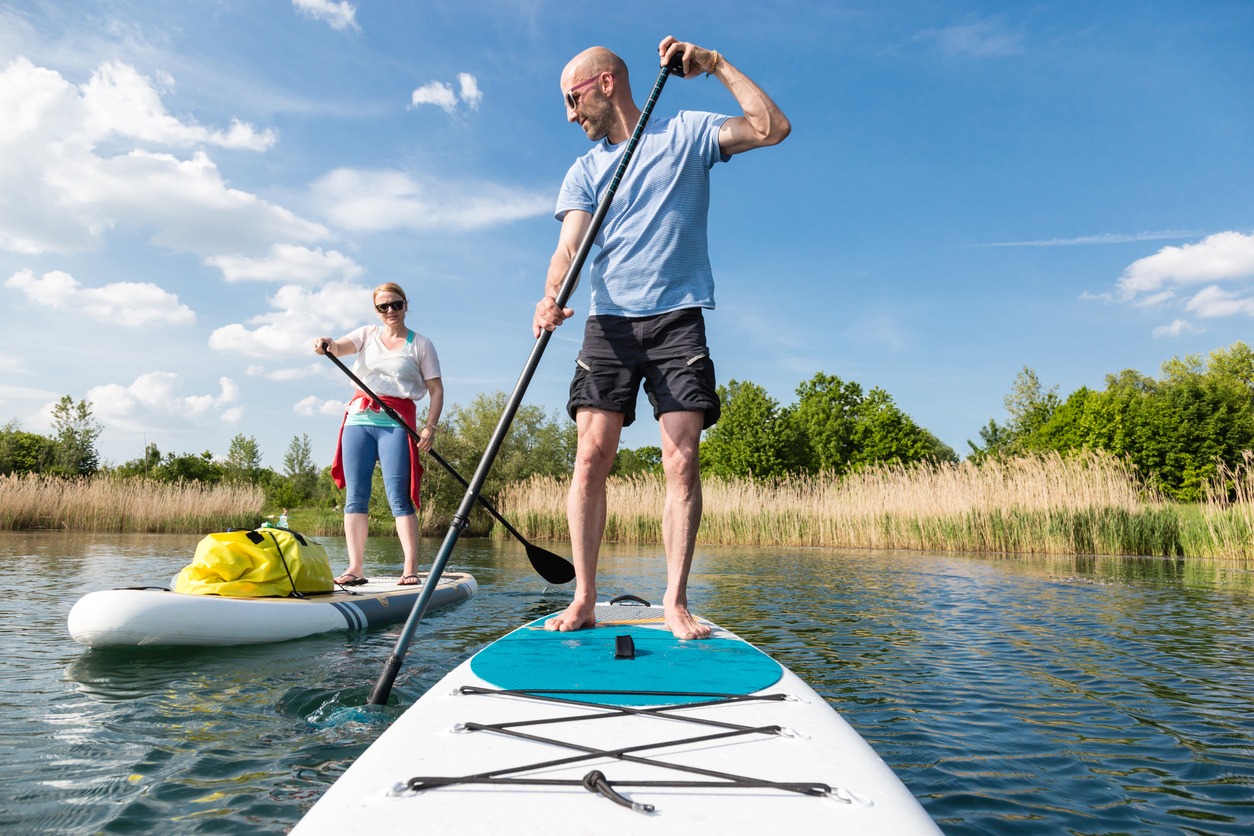
Staying hydrated is vital when bodyboarding and stand up paddleboarding. You'll perform better and stay safer by drinking plenty of water before, during, and after your sessions. Aim to consume at least half your body weight in ounces of water daily, and drink an extra 16-20 ounces 1-2 hours before hitting the waves. While on the water, sip 7-10 ounces every 10-20 minutes and consider electrolyte-rich drinks for longer outings. Watch for signs of dehydration like dark urine, fatigue, and dizziness. Proper hydration isn't just about water intake; it's an extensive strategy that can greatly enhance your water sports experience.
Understanding Hydration for Water Sports
When you plunge into water sports like bodyboarding and stand-up paddleboarding, staying hydrated is indispensable for your performance and safety. While you're surrounded by water, it's easy to overlook your body's need for hydration. However, proper hydration is pivotal for maintaining your energy levels, preventing fatigue, and reducing the risk of injury during these activities. Stand up paddle boarding offers varying levels of intensity from gentle drifts to heart-pounding paddles, making proper hydration even more essential.
Dehydration can substantially impact your physical and mental performance, potentially leading to dangerous conditions like heat exhaustion and heatstroke. To avoid these risks, aim to consume at least half your body weight in ounces of water daily, with additional intake before, during, and after your water sports sessions.
Don't rely on water alone; incorporate electrolyte-rich drinks to replenish minerals lost through sweating. These electrolytes are essential for ideal hydration and bodily functions. Additionally, include hydration-boosting foods in your diet to enhance overall hydration.
Develop consistent hydration habits to guarantee peak performance and enjoyment during bodyboarding and stand-up paddleboarding. Carry a reusable water bottle and take regular water breaks. By prioritizing hydration, you'll not only improve your performance but also safeguard your health while engaging in these exciting water sports.
Signs of Dehydration on the Water
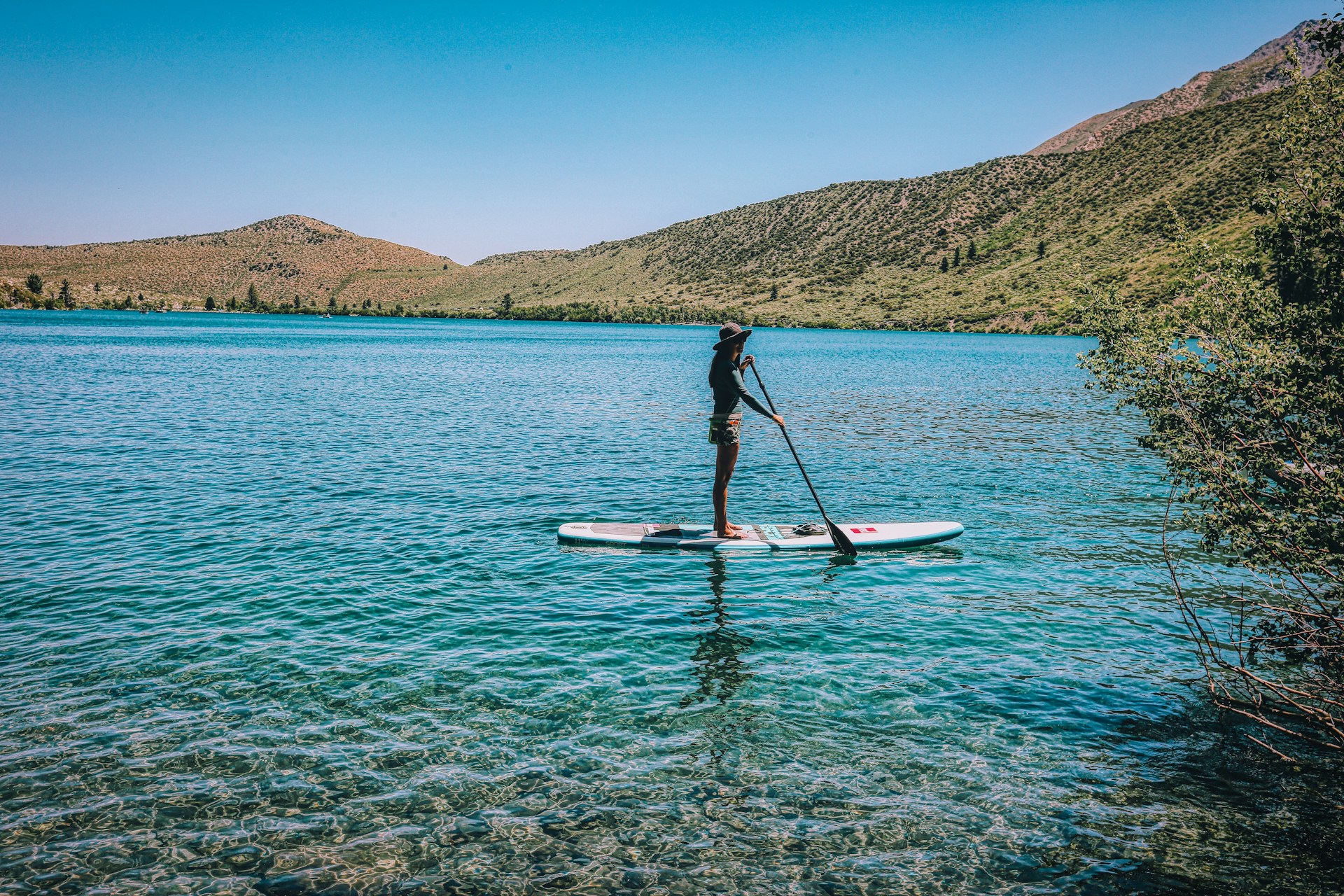
Recognizing the signs of dehydration while bodyboarding or stand up paddleboarding is paramount for your safety and performance. As you paddle through the waves or glide across calm waters, your body continuously loses fluids, making it imperative to stay hydrated. Promoting healthy blood circulation throughout the body is an important benefit of snorkeling, which can also help with dehydration. Watch out for these telltale signs that you're not getting enough fluids:
- Dark yellow or amber-colored urine
- Reduced sweat production and dry mouth
- Feelings of thirst and fatigue
- Decreased mental focus and impaired coordination
If you notice any of these symptoms, it's time to take action. Dehydration can lead to more severe issues like headaches, muscle cramps, dizziness, and confusion, which can seriously affect your ability to paddle safely and effectively. In extreme cases, failing to replenish fluids and essential electrolytes during prolonged sessions can result in life-threatening conditions such as heat exhaustion or heatstroke.
To perform better and stay safe on the water, make a conscious effort to stay hydrated. Drink water regularly, even if you don't feel thirsty, and consider bringing along sports drinks to replenish electrolytes. Remember, proper hydration is key to enjoying your time on the water and pushing your limits safely.
Pre-Session Hydration Strategies
Effective pre-session hydration strategies can help you avoid the signs of dehydration we just discussed. Whether you're planning a SUP session or bodyboarding, proper hydration begins long before you hit the water. To guarantee adequate hydration, aim to consume at least half your body weight in ounces of water daily. For example, if you weigh 150 pounds, you should drink 75 ounces of water.
Start your day with a full glass of water and maintain consistent water intake throughout the day. As you approach your paddling session, drink an additional 16-20 ounces of water 1-2 hours before hitting the waves. This will optimize your hydration levels and prepare your body for the physical demands of water sports.
Remember that your hydration needs may vary based on factors like climate, exertion level, and individual differences. It's essential to adjust your water intake accordingly. Avoid alcohol and caffeine before your session, as they can contribute to dehydration. For personalized hydration requirements, consult a healthcare professional who can help tailor a strategy that suits your specific needs for both pre-session and during-paddle hydration.
On-Board Hydration Techniques
Maintaining proper hydration during your bodyboarding or SUP session is essential for ideal performance and safety. To guarantee you're meeting your hydration needs while on the water, carry a reusable water bottle that can be easily attached to your board. This allows for convenient access to drinking water throughout your session.
Every time you take a break from paddling or riding waves, aim to consume 7-10 ounces of water. This frequency helps replenish fluid loss and maintain maximum hydration levels. For longer sessions, consider incorporating electrolyte-rich sports drinks or tablets to replace key minerals lost through sweating.
- Attach a reusable water bottle securely to your board
- Drink 7-10 ounces of water every 10-20 minutes of active paddling
- Use electrolyte-rich drinks for extended sessions
- Monitor your urine color as an indicator of hydration status
Electrolyte Replenishment for Peak Performance
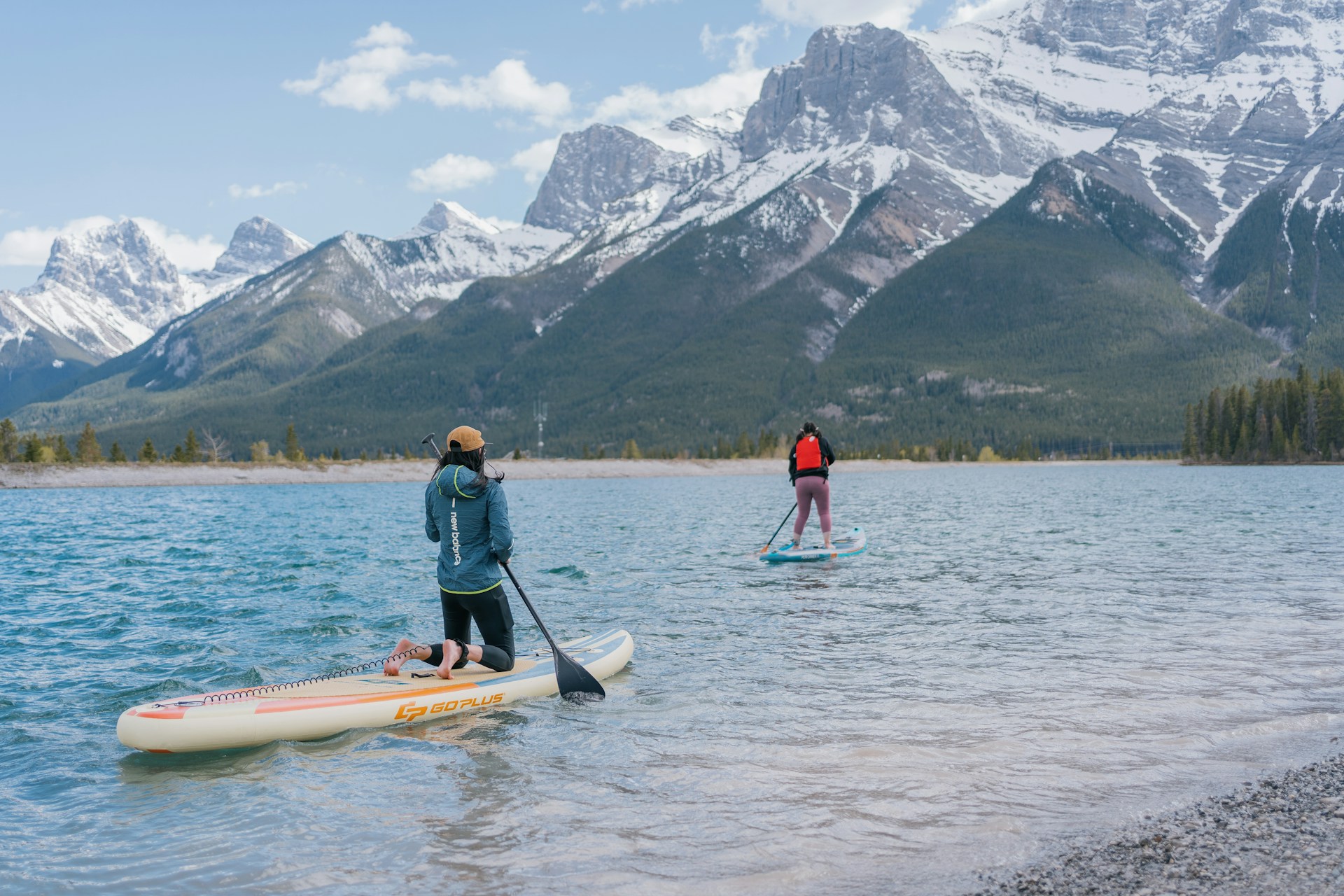
While staying hydrated with water is important, it's only part of the equation for peak performance in bodyboarding and stand up paddleboarding. You need to replenish electrolytes like sodium, potassium, and magnesium to maintain proper hydration and maximize your endurance on the water.
Sports drinks containing electrolytes can help replace what you lose through sweating, but consume them in moderation to avoid excess sugar. Consider incorporating electrolyte tablets or powders into your hydration routine for a quick and effective way to reverse dehydration without carrying extra gear.
You can also opt for natural sources of electrolytes. Snack on foods like bananas, avocados, and leafy greens to replenish key minerals lost during your water activities. These options provide essential nutrients without the added artificial sweeteners often found in sports drinks.
To optimize your hydration strategy, monitor your urine color and aim for a 50/50 ratio of water to electrolyte-infused drinks. This balanced approach will help you maintain peak performance while bodyboarding or stand up paddleboarding, ensuring you stay energized and focused throughout your session.
Post-Session Recovery and Rehydration
After an exhilarating session of bodyboarding or stand up paddleboarding, your post-activity routine is crucial for recovery. Rehydration should be your top priority within the first hour after your session. Consume 16-20 ounces of water or a sports drink rich in electrolytes to replenish fluids lost through sweating and support your body's recovery process.
Remember, dehydration can continue to affect your body even after you've finished your activity. To guarantee proper rehydration:
- Monitor your urine color - light yellow to clear indicates good hydration status
- Drink water consistently throughout the day
- Consider incorporating oral rehydration salts for enhanced recovery
- Listen to your body's thirst signals
Choosing the Right Hydration Gear
Now that you've got your post-session hydration routine down, let's focus on the gear you'll need to stay hydrated during your bodyboarding or SUP expeditions. Choosing the right hydration gear is essential for maintaining optimal performance and safety on the water.
For SUP enthusiasts, reusable water bottles with clip-on attachments are an excellent choice. They're convenient and can be easily secured to your board, ensuring you've always got water within reach. If you're planning longer paddle sessions, consider insulated bottles to keep your water cool throughout the day.
For more active SUP activities, hydration packs offer a hands-free solution, allowing you to sip water without interrupting your paddling rhythm. These are especially useful during intense workouts or races.
If you're venturing into remote areas, portable water filters can be a lifesaver, providing access to clean drinking water directly from natural sources.
When selecting your hydration gear, consider the length and intensity of your planned paddle session. For short trips, a simple reusable bottle might suffice, while longer expeditions may require a combination of insulated bottles and hydration packs to keep you properly hydrated.
Environmental Factors Affecting Hydration
Considering the diverse environments bodyboarders and SUP enthusiasts encounter, it's crucial to understand how environmental factors affect your hydration needs. Weather conditions play a significant role in determining your hydration requirements. Hot and humid climates can increase your sweat loss, demanding higher water intake to maintain proper fluid balance. Surprisingly, cold weather can also lead to dehydration as your body works hard to maintain core temperature.
During your SUP sessions, be aware of these environmental factors that impact hydration:
- Sun exposure: Intense sunlight increases perspiration and fluid loss
- Wind: Can accelerate evaporation from your skin, leading to faster dehydration
- Water temperature: Cold water may mask your body's thirst signals
- Humidity: High humidity reduces your body's ability to cool through sweat evaporation
To adapt your hydration strategy, consider consuming water-rich foods like watermelon, cucumber, and oranges alongside your regular water intake. This can help supplement your hydration in varying environments. Remember, staying properly hydrated isn't just about drinking water; it's about understanding and responding to the environmental factors that affect your body's fluid balance during bodyboarding and SUP activities.
Building Long-Term Hydration Habits
While adapting to environmental factors is key for immediate hydration needs, establishing long-term habits guarantees you're consistently prepared for your bodyboarding and SUP escapades. To stay properly hydrated every single day, start by developing a routine that incorporates water consumption into your daily life. Begin each morning with a large glass of water, setting the tone for the rest of the day.
Invest in a reusable water bottle and keep it with you throughout the day. This simple step makes it easy to track your intake and certifies you're never far from a refreshing sip. Complement your water intake with hydration-boosting foods like fruits and vegetables, and consider electrolyte-infused water for an extra refreshment.
Leverage technology to reinforce your hydration habits. Use tracking apps or set reminders on your phone to prompt you to drink water regularly. Remember, staying hydrated isn't just about pre- or post-activity consumption; it's an ongoing process that supports your overall well-being and performance on the water. By consistently practicing these habits, you'll naturally maintain proper hydration levels, enhancing your bodyboarding and SUP experiences.

